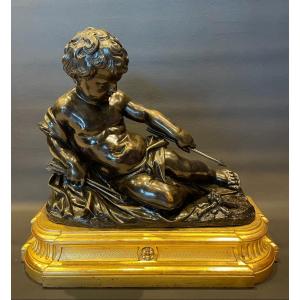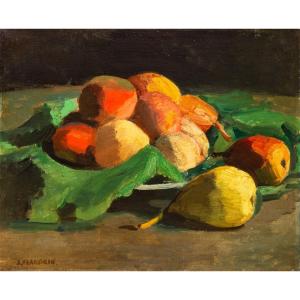Edith Berger studied at the School of Industrial Fine Arts in Grenoble, where she was a student of Tancrède Bastet and Louise Morel. She continued her studies at the École nationale des beaux-arts in Lyon and then at the Académie de la Grande Chaumière, from 1920 to 19242, in Paris, where she met her friends Henriette Deloras and Jules Flandrin. Tuberculosis forced her to leave the capital to be treated at the sanatorium and then at the aftercare center. In 1920, on her way back from a trip, she passed through Trièves. Fascinated by the beauty of the place, she returned there for the first time in 1929 and a second time for a stay of a few months in 19304. She read Jean Giono in Les nouvelles littéraires, she wanted to write and submit a few pages to him. They met in 1931, maintained a correspondence and became friends. However, Giono noticed her talent for painting more than for writing, which led him to stop writing. In 1934, Édith Berger took advantage of a vacant position at the Lalley town hall to settle there permanently. She was town hall secretary and in her free time she created landscapes "en plein air", portraits, still lifes and captured moments of daily life in the countryside on canvas. She mastered a variety of techniques: oil, tempera, crayolor, charcoal, pastel and linocut. Jean Giono began to regularly visit Trièves and to write texts and annotated essays there. Berger prepared linocuts to accompany this material and the whole was published in 1950 under the title Village. Giono would then write several novels inspired by the region. Édith Berger's works were presented by galleries in Grenoble (Saint-Louis, Dauphin, Hébert, etc.), Lyon, Marseille and Paris, then as far as Holland and a university in the United States, as part of international exchanges. This constant contact with the outside world allowed her to receive many visits in her adopted city. In Lalley, Édith Berger would also meet André Gide. Giono would say of her: "It is through the quality of her work that this discreet, even secretive artist, who kept herself apart - geographically and aesthetically - from artistic trends and circles, obtained her recognition. » Distinguished several times, Édith Berger was made a knight of Arts and Letters by the Minister of Culture Jack Lang.
Édith Berger is buried in the Lalley cemetery.























 Le Magazine de PROANTIC
Le Magazine de PROANTIC TRÉSORS Magazine
TRÉSORS Magazine Rivista Artiquariato
Rivista Artiquariato
